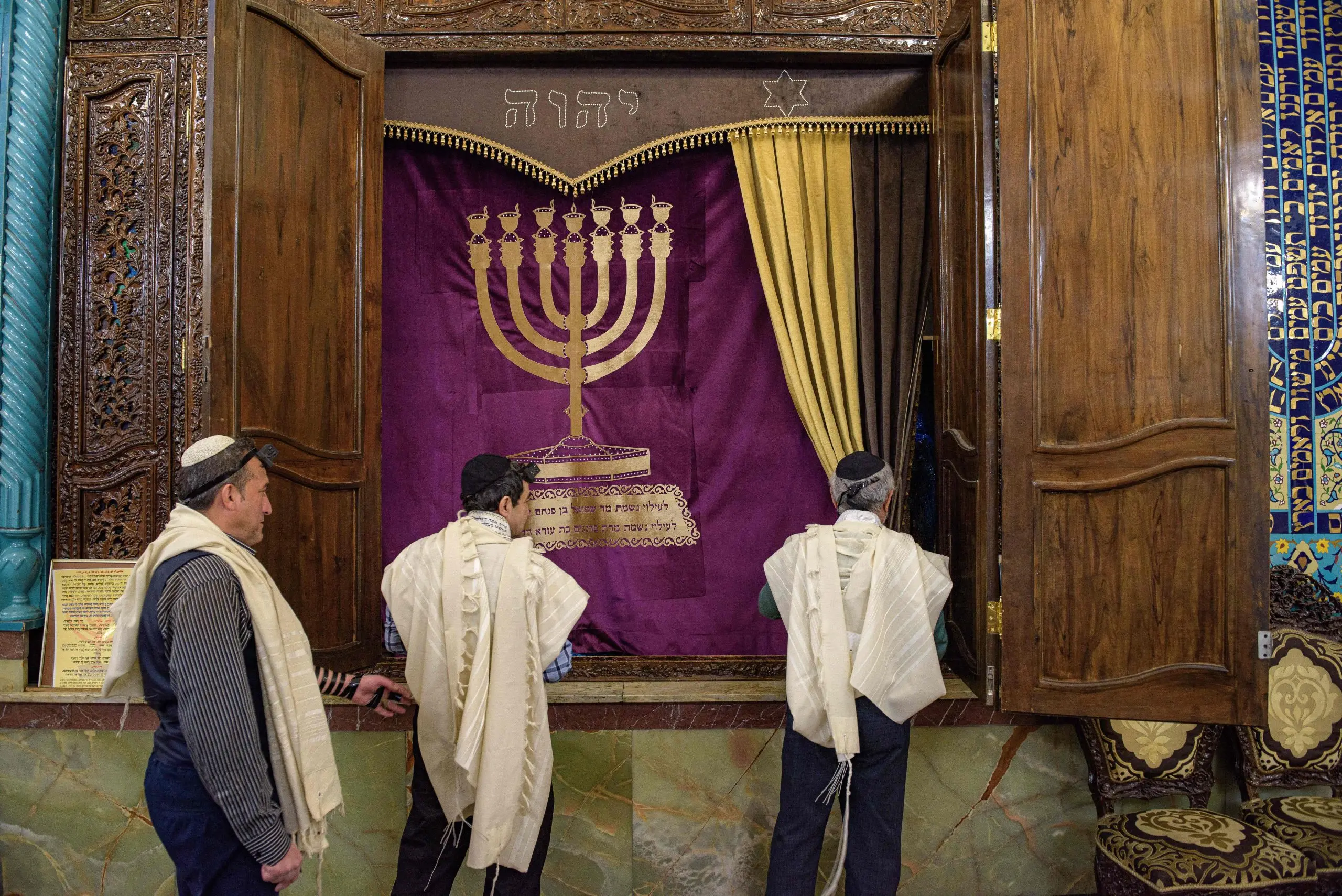A New Front in the Conflict: Iran’s Propaganda War
In mid-June, as Israeli airstrikes targeted Iranian military bases and nuclear facilities, the Islamic Republic shifted its focus to a new battlefield: the airwaves. On state-run television, a chilling propaganda campaign unfolded. Iranian Supreme Leader Ali Khamenei appeared flanked by Revolutionary Guard officers while a narrator declared, “We are all proud soldiers…we will uproot the Jews with our power.” This message was not just about defiance after the regime’s military and nuclear apparatus suffered a humiliating blow from Israel; it also sent a more ominous signal to Iran’s Jewish population.
The regime’s actions following the 12-day war included a wave of arrests. Hundreds of Iranians were detained on espionage charges, including at least 35 Jews in Tehran and Shiraz. Many were interrogated and harassed. Their social media activity was scrutinized, and they were pressured to cut ties with relatives abroad, especially those in Israel. This was not merely a crackdown—it was a calculated effort to isolate and intimidate an already vulnerable community.
A History of Survival and Resilience
Jews have lived in Iran for nearly 3,000 years, their roots predating both Islam and Christianity. Shaped by the legacy of Queen Esther, whose story is retold each year during Purim, Iran’s Jews have survived persecution, war, and revolution through careful adaptation and often, silence. The regime has frequently used Jews as pawns to fuel anti-Israel sentiment. For example, on Oct. 30, 2023, reports indicated that Iranian authorities coerced Jewish leaders and communities into participating in anti-Israel protests across five cities shortly after the Iran-backed October 7 terror attacks.
Today, roughly 10,000 Jews remain in Iran, making them the largest Jewish population in the Middle East outside of Israel. They are recognized in Iran’s constitution as a “people of the book” and are allowed to pray in synagogues and run kosher restaurants, butcheries, and schools—all under the watchful eye of the regime. This limited freedom is not born out of religious tolerance, but rather from strategic necessity. It helps the regime deflect accusations of antisemitism.
Political Calculus and Symbolic Representation
Iran’s parliament, or Majles, reserves one seat for a Jewish representative, and Jewish representatives have occasionally joined the Islamic Republic’s delegation to the United Nations General Assembly’s high-level week held every September in New York. This political calculus explains why the regime continues to use its Jewish minority as a symbol of tolerance. As Iranian American writer Roya Hakakian observed in The Atlantic, “the existence of Jewish Iranians inside the country became an important symbol [to the mullahs], especially in contrast with the absence of Jewish life in other Muslim countries in the region.”
Despite this symbolic representation, the regime has not hesitated to display open hostility toward Jews. In 2005, then-President Mahmoud Ahmadinejad hosted an international Holocaust cartoon competition—a grotesque display of Jew-hatred and Holocaust denialism that continues today with state backing.
A Shrinking Population and Fragile Safety
Since the 1979 Islamic Revolution, when a theocratic, anti-American, and anti-Israeli regime seized power, Iran’s Jewish population has plummeted by 90%—from approximately 100,000 under the country’s last monarch, Mohammad Reza Pahlavi. The execution of Habib Elghanian, a Jewish Iranian businessman, philanthropist, and community leader, in 1979 accelerated the exodus.
Unlike other Jewish communities across the Middle East, Iran’s Jews were never forcibly expelled en masse. Their presence has been continuous, but their safety has always been fragile. The recent arrests of Jews in Iran are just the latest reminder that the Islamic Republic sees loyalty to the regime as absolute. Any perceived deviation, whether through protest or even having a relative abroad, can be construed as a threat.
The Broader Implications
This is one of the central themes of my forthcoming book, Unveiled: Inside Iran’s #WomanLifeFreedom Revolt, which explores how the 2022-2023 uprising sparked by the death of Mahsa Amini revealed a growing rift between the Iranian people and the regime. The enemy of the Islamic Republic isn’t just Zionism or the West—it’s autonomy and dissent.
Iran’s Jews are once again caught in a geopolitical storm. Their silence is not complicity, but survival. And their endurance is not a reflection of the regime’s tolerance, but of the Jewish people’s resilience. They must not be forgotten by global Jewry nor by those who still believe in a future for Iran that is free and just.







